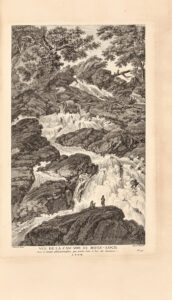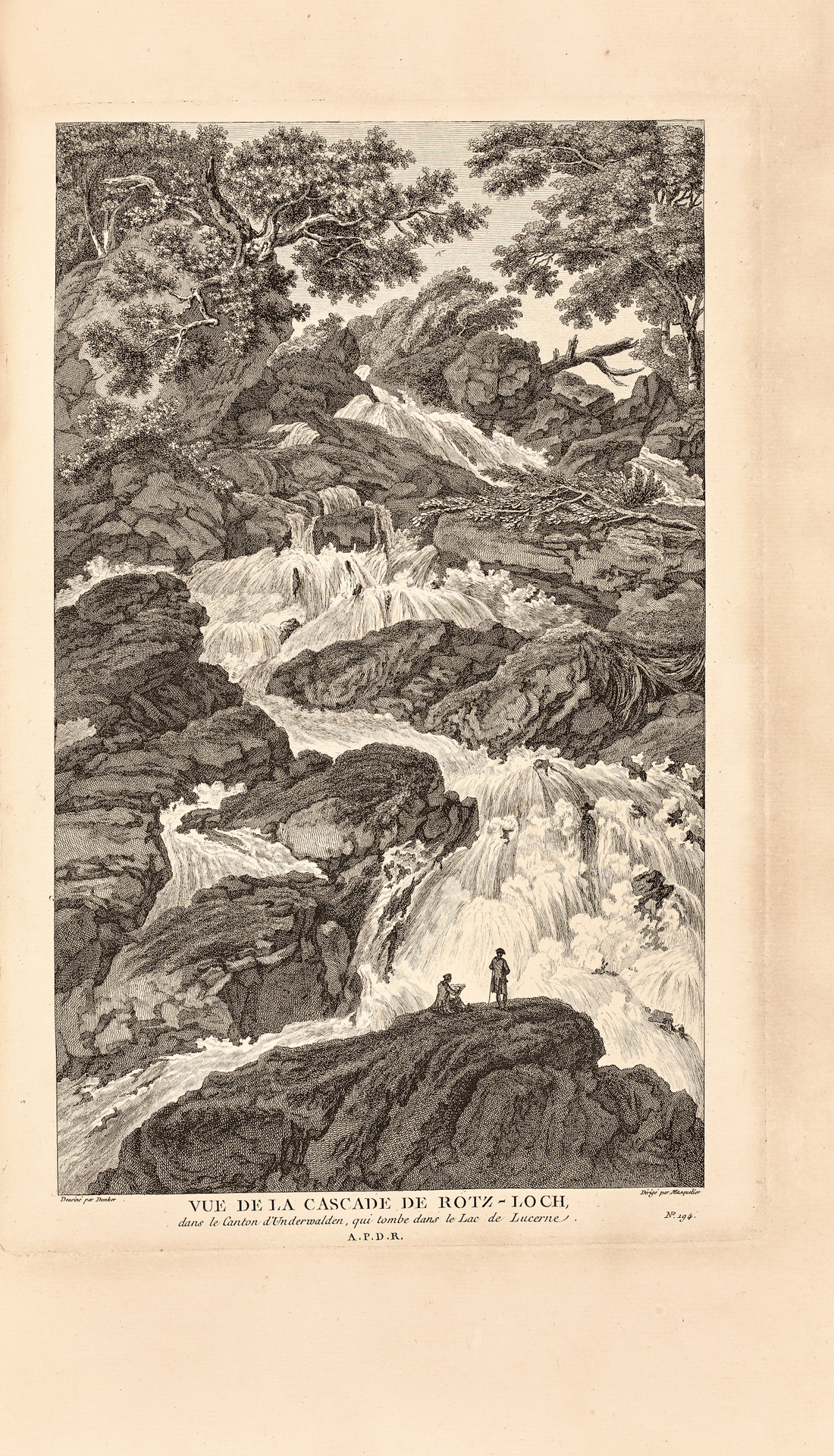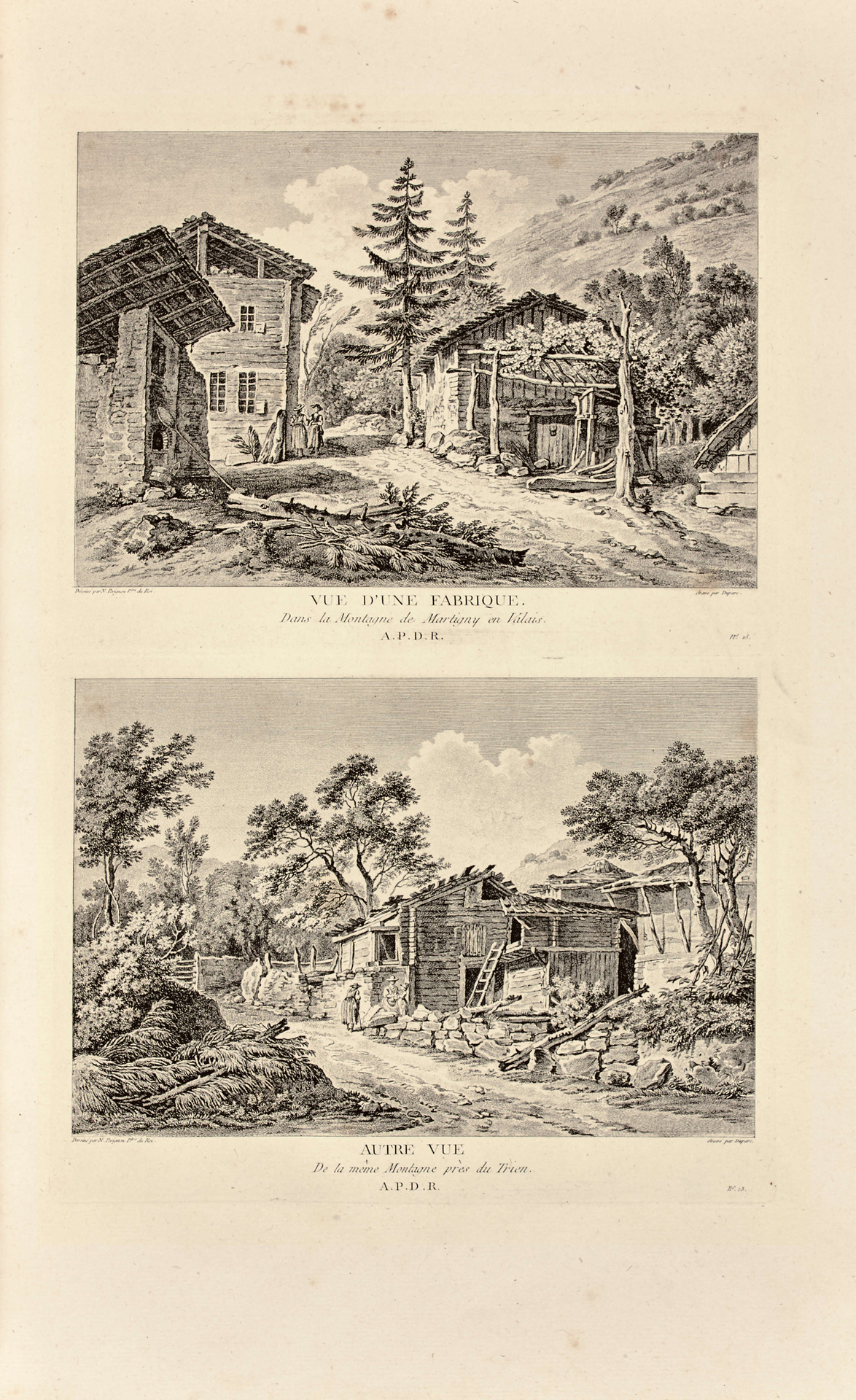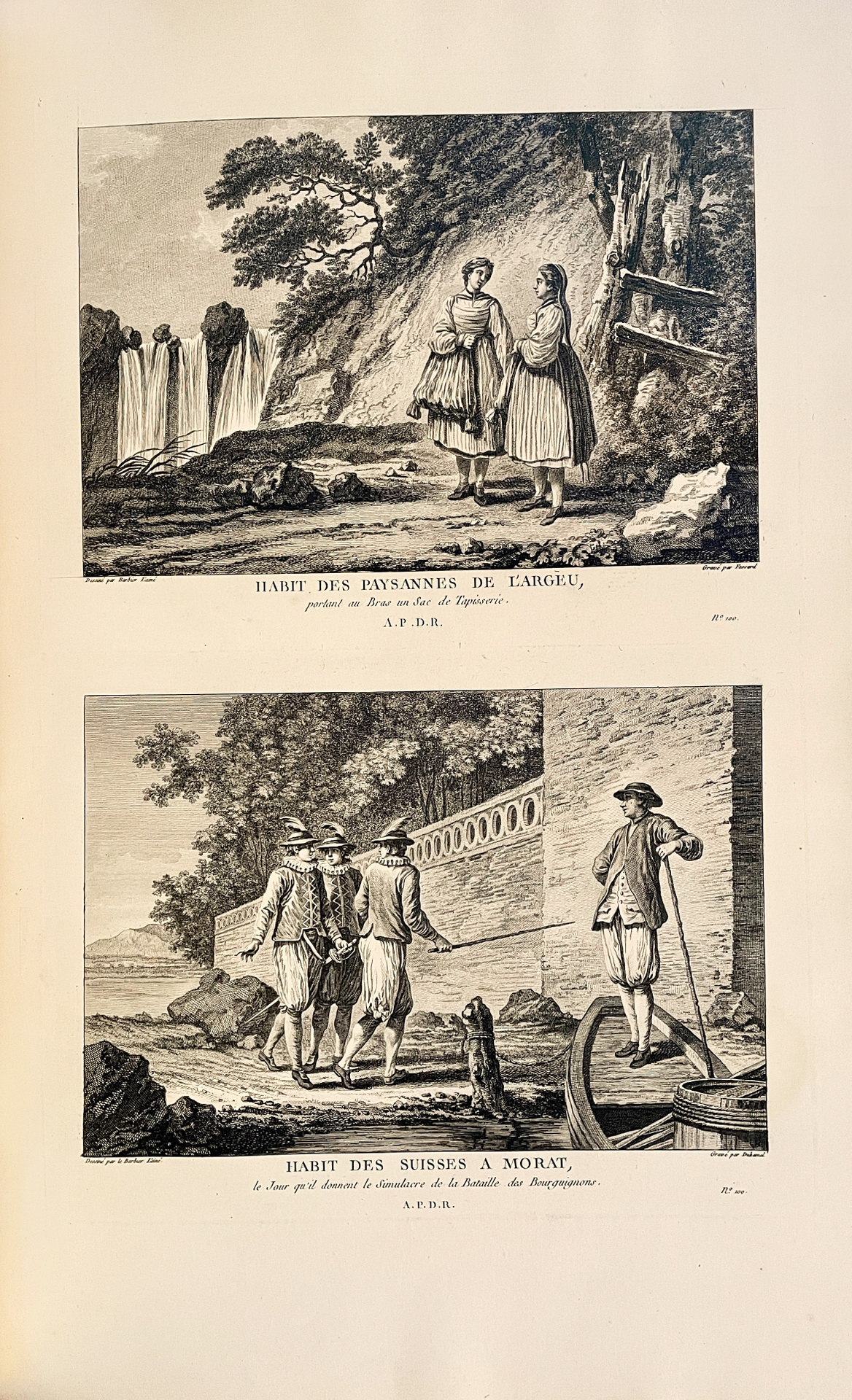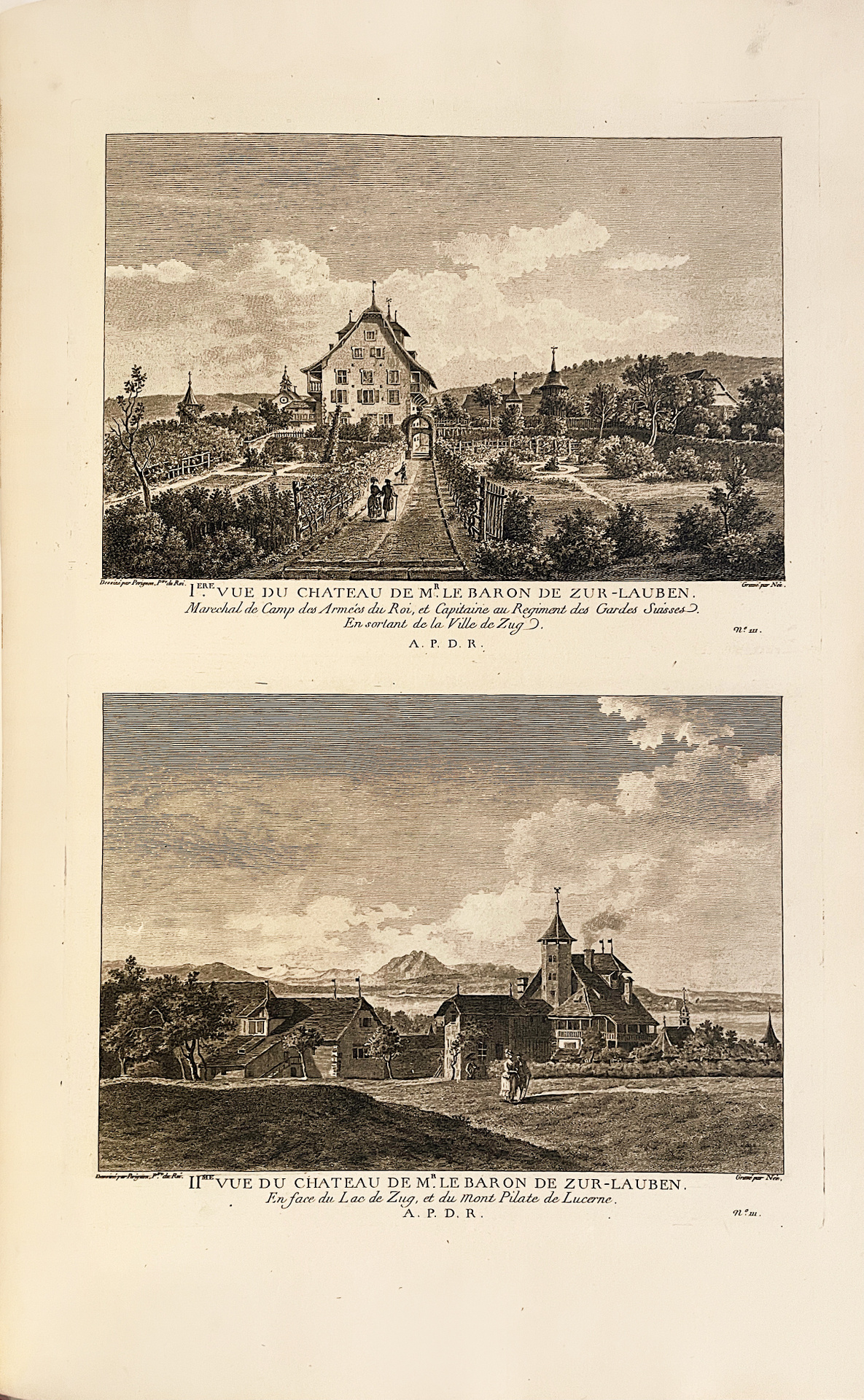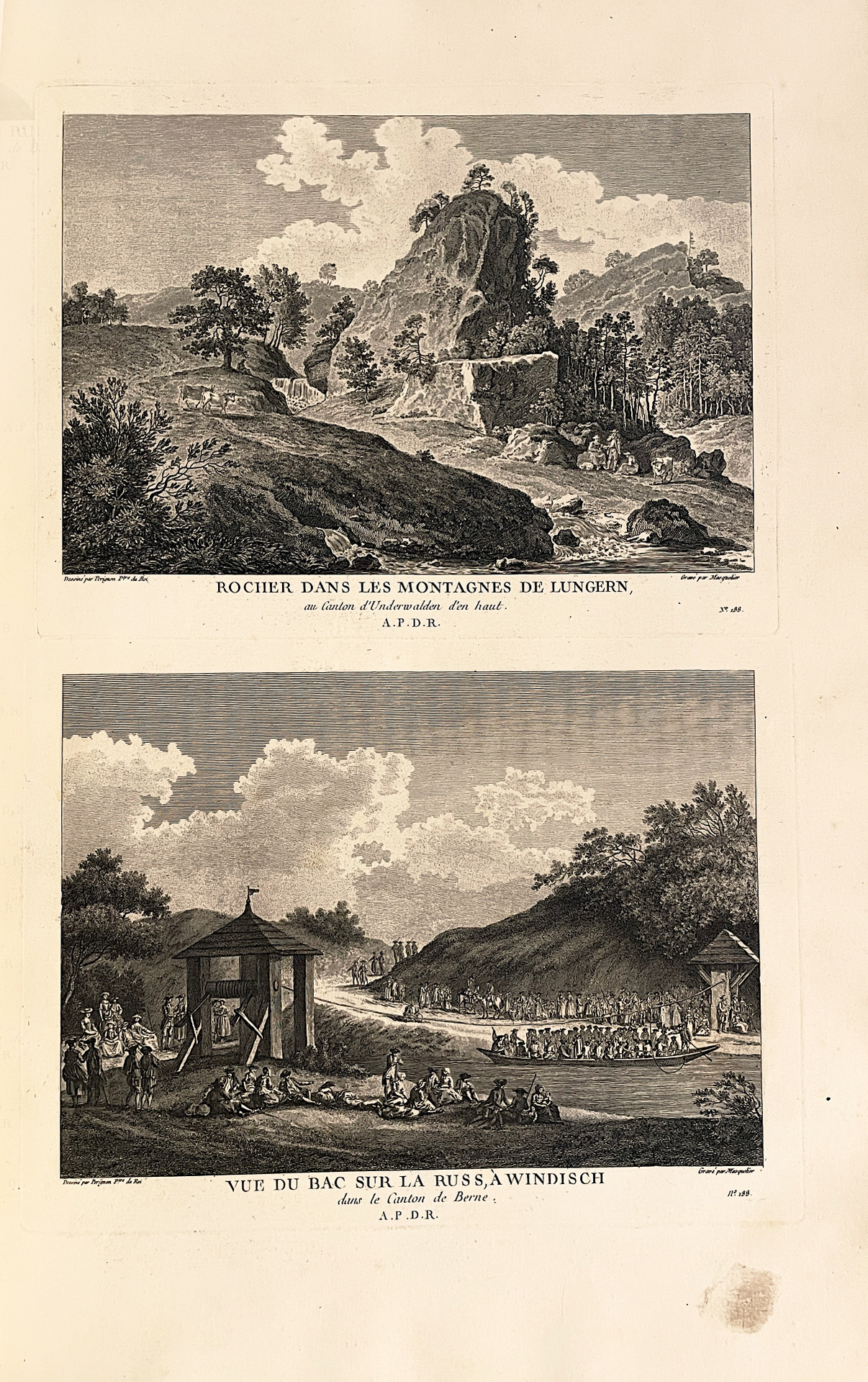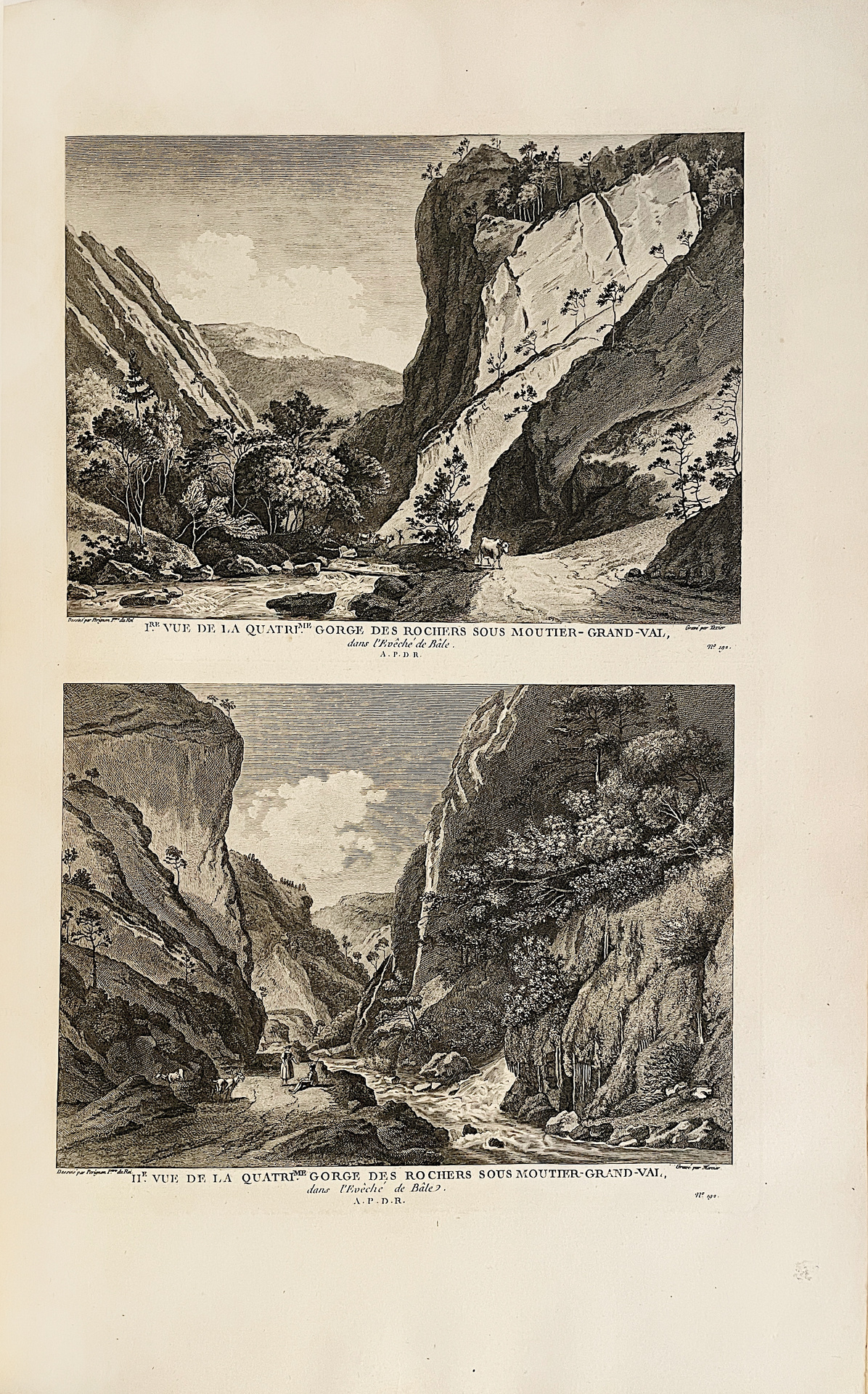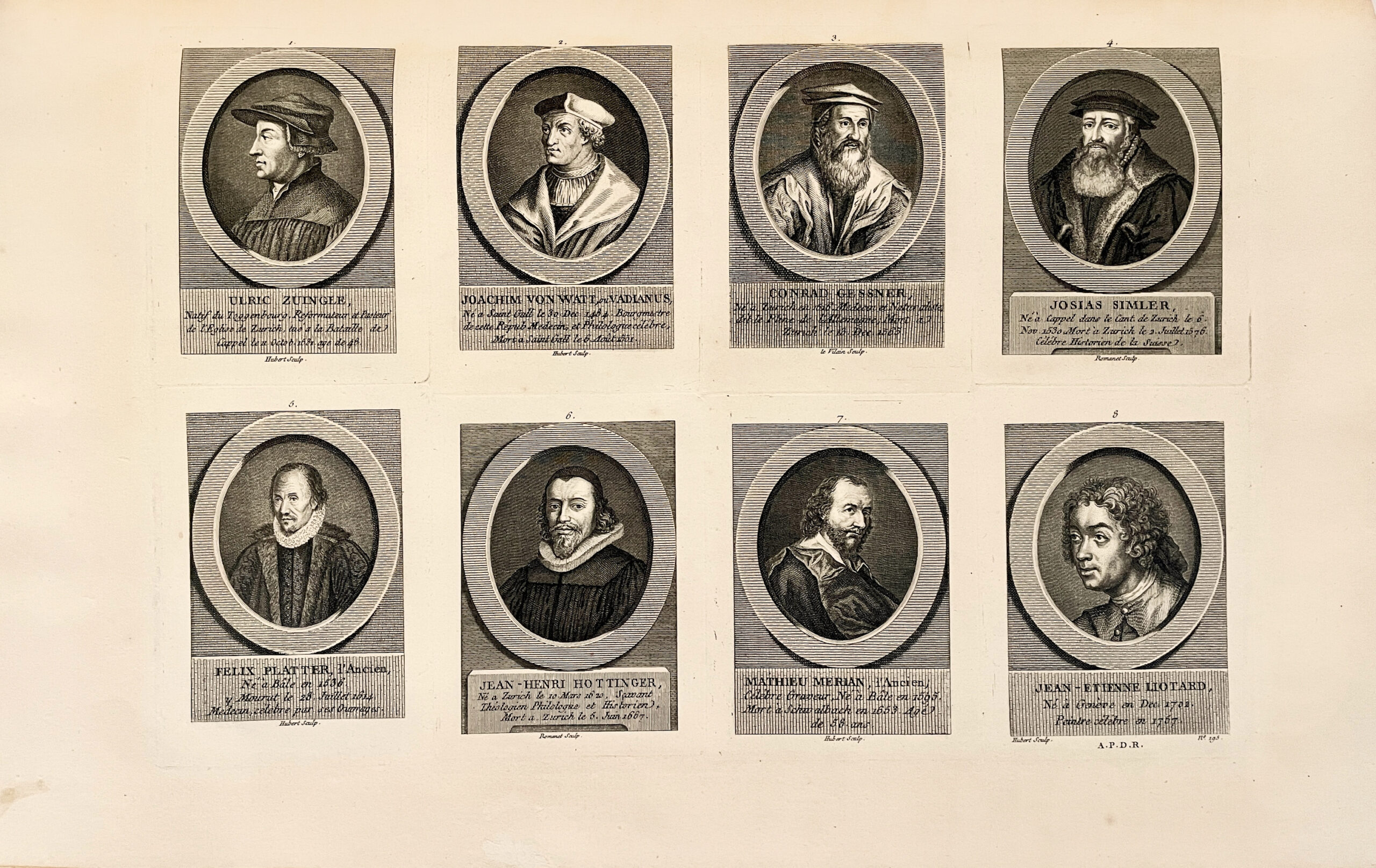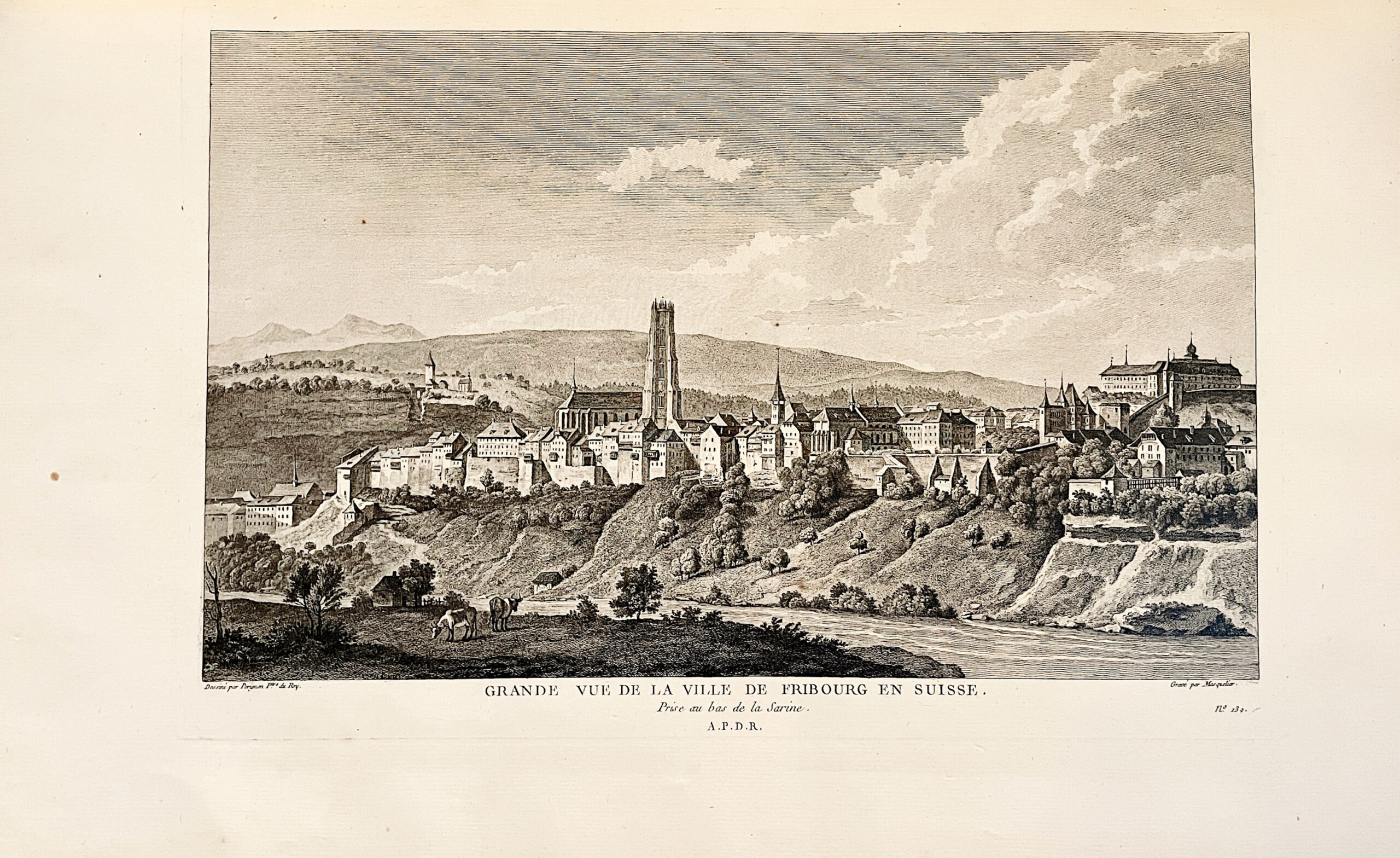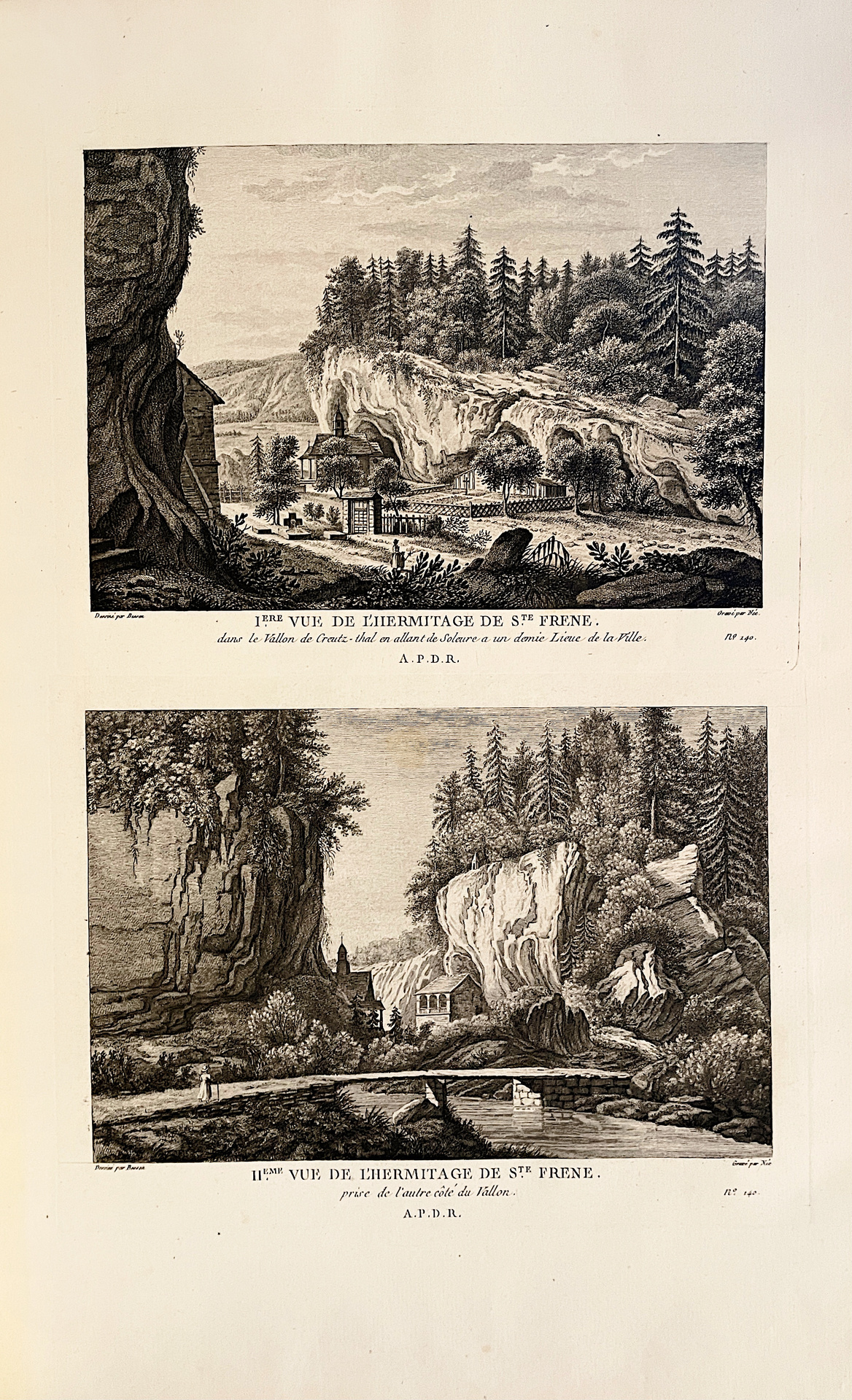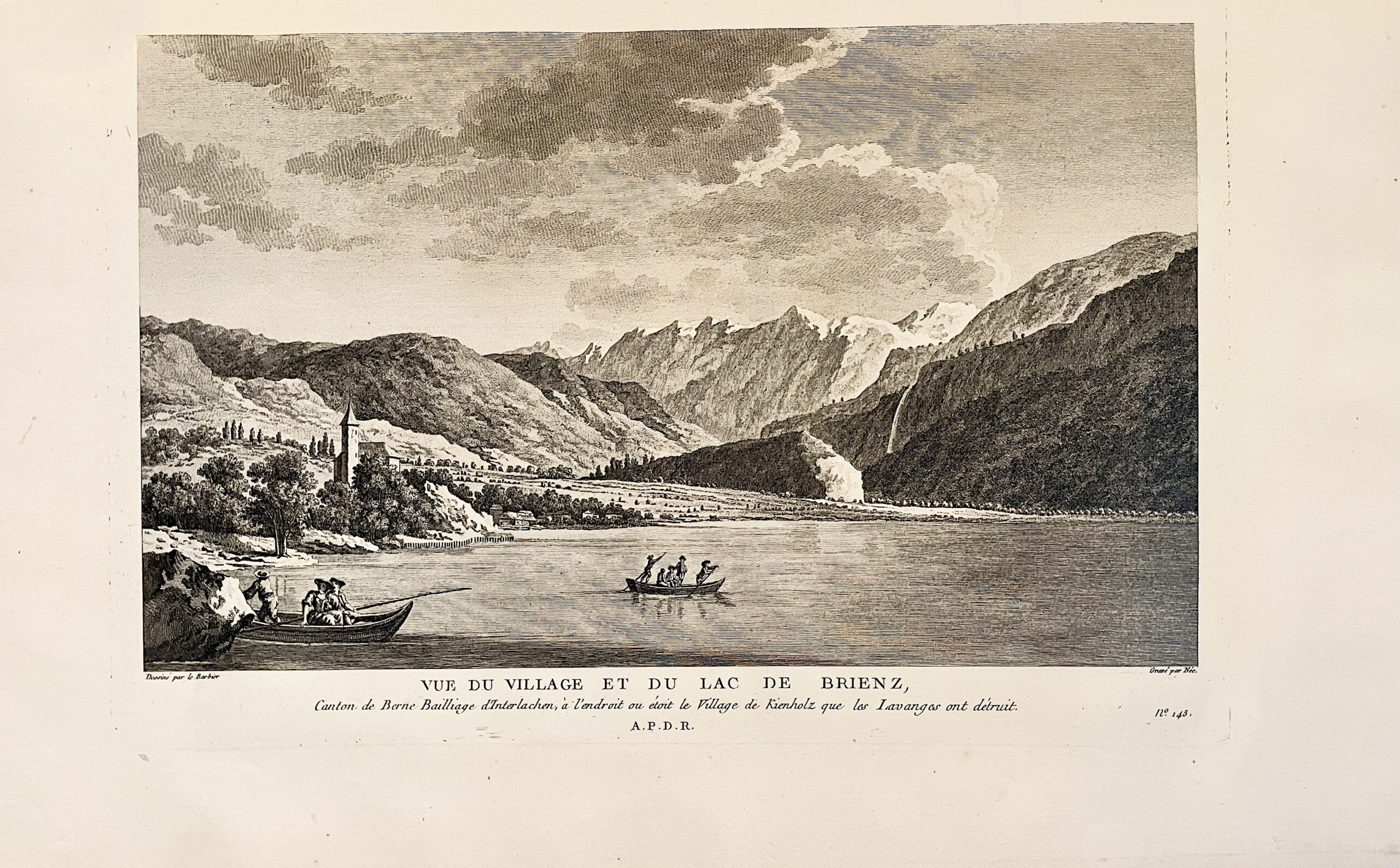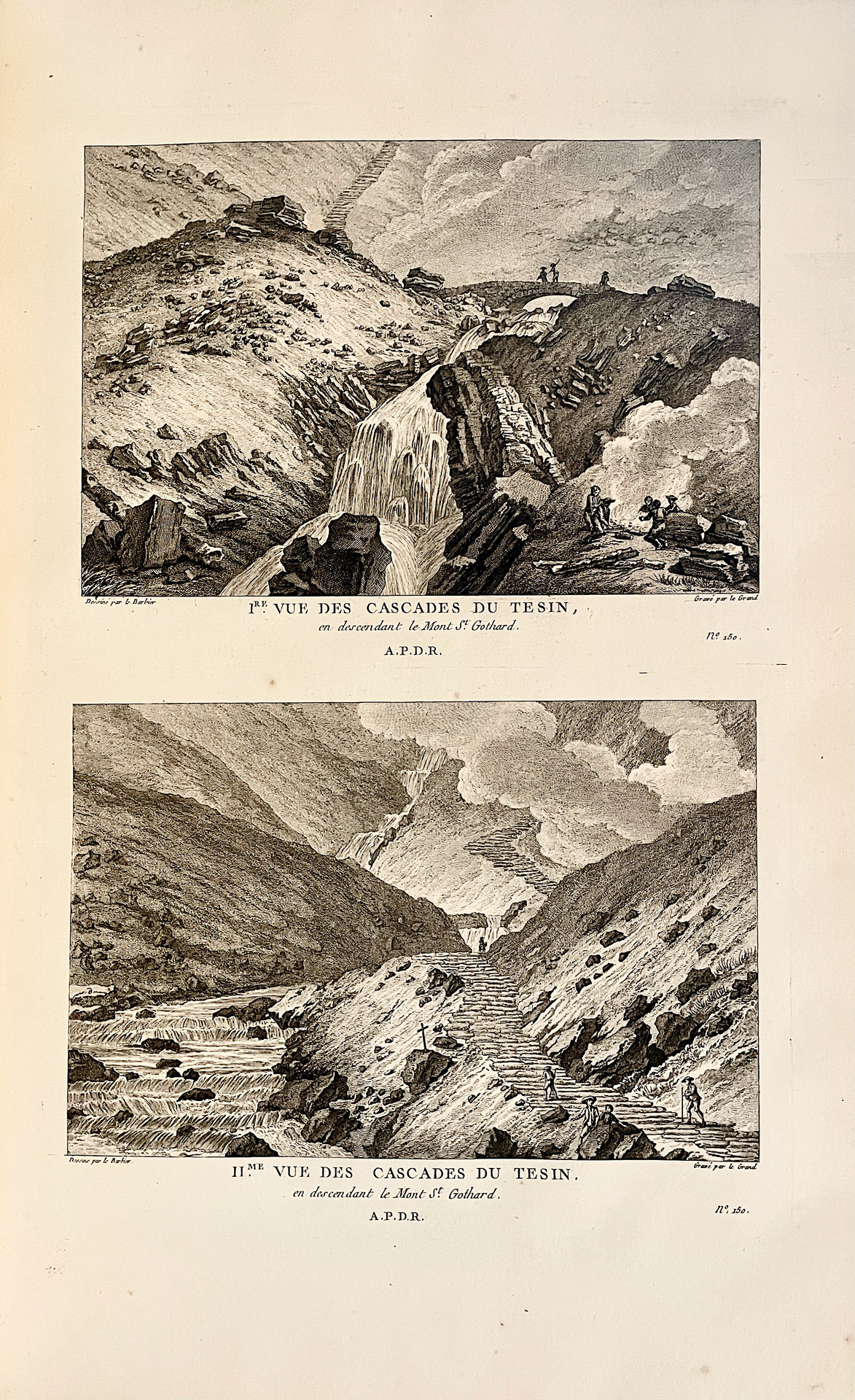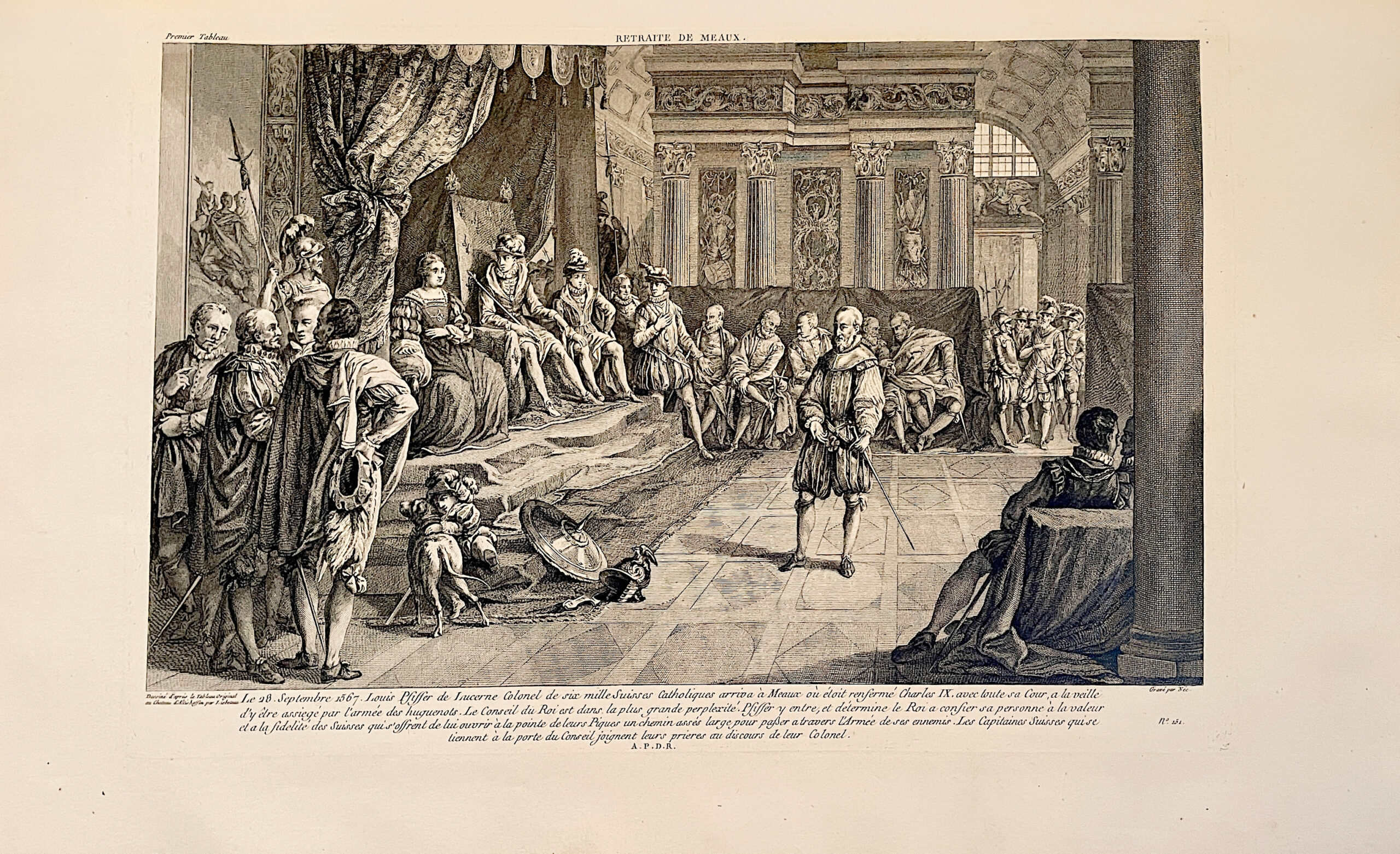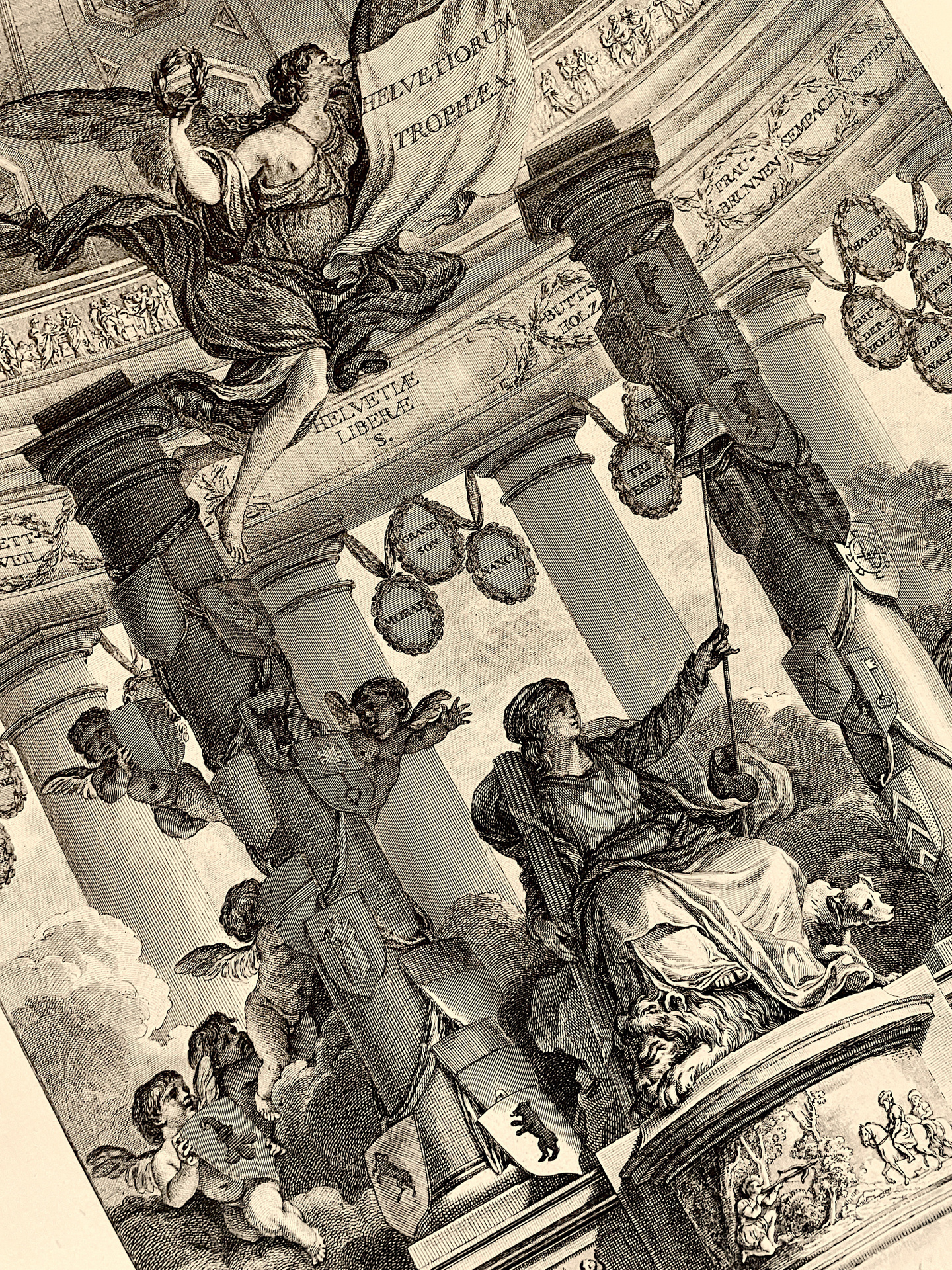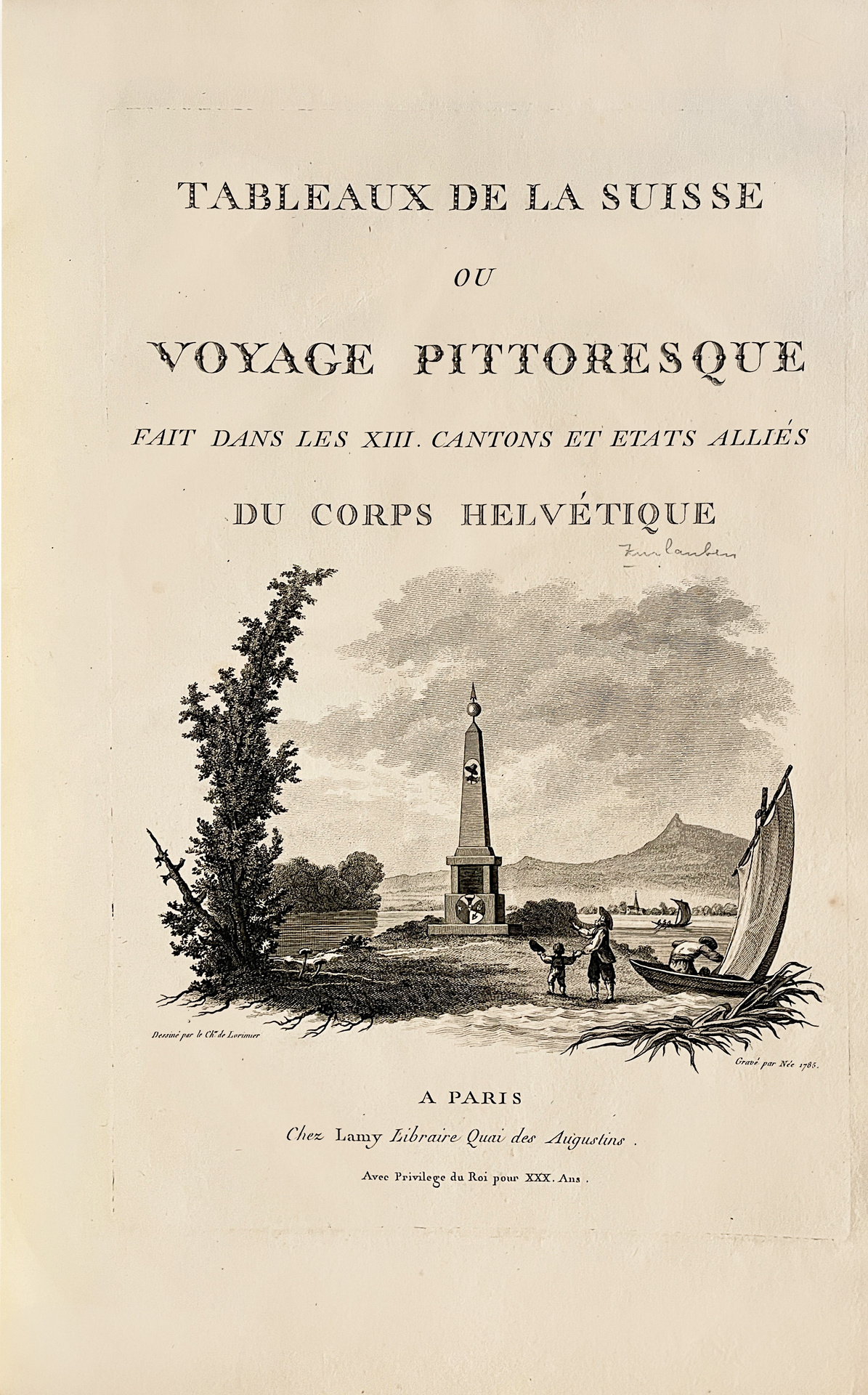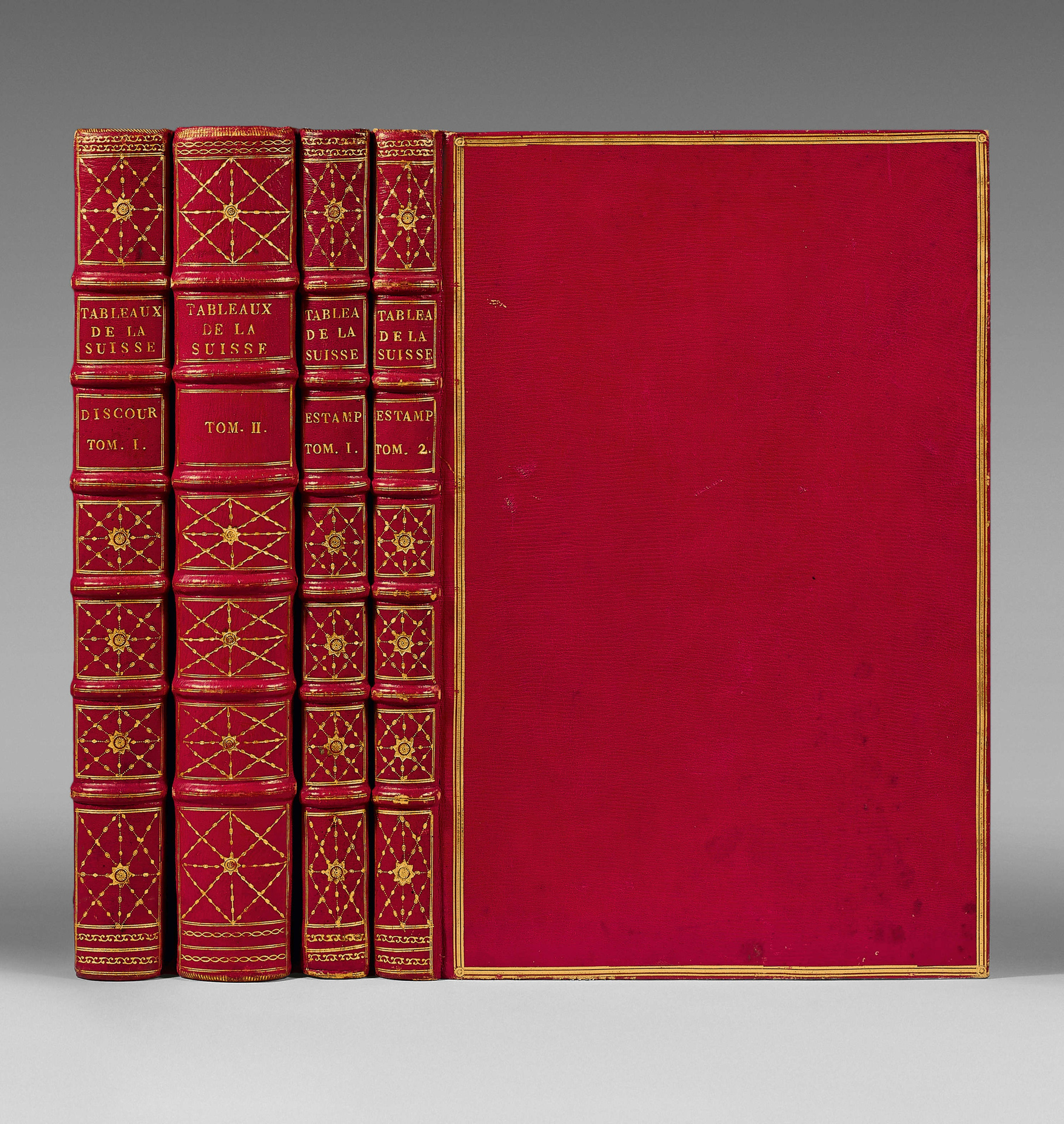Paris, Clousier et Lamy, 1780-86.
5 parts bound in 4 folio volumes [478 x 313 mm] (2 volumes of text, 2 volumes of engravings) of:
* Text: I/ (7) ll., 10 pp., lxxxiv pp., (1) l. of half-title, 368 pp., lxvi pp., (3) ll. ; small restoration in the margin of p. 45 ; II/ (3) ll., 7 pp., 8 pp., 578 pp. (error in numbering pp. 367-370), (3) ll., 129 pp. of table, (têr in the margin of p. 54 without loss and p. 91 with a small loss of few mm) ;
* Engravings: I/ 1 frontispiece, 7 pp. including 1 engraved title, 130 plates out of pagination, small têr formerly restored without loss in the margin of pl. 37; II/ (2) ll., 120 plates out of pagination including 2 folding. Cohen mentions a half-title at the beginning of the first engravings volume that was not bound here.
Bound in full red morocco, triple gilt fillet around the covers, spines ribbed and decorated, double inner gilt fillet, inner dentelle with floral decoration, gilt edges. Contemporary binding.
The most famous and the most complete collection of engravings on Switzerland.
Cohen 1075-1076 ; Barbier IV-658 ; Reynaud 573-574.
It is illustrated with one frontispiece by Morêu, one engraved title, 227 engravings of cities, landscapes and various views including 109 with two subjects, 5 plates of medals, 7 maps and 11 plates of portraits drawn by Le Barbier, Châtelet, Bertaux and Pérignon.
These artists had come especially to Switzerland to accurately draw the most bêutiful sites of the country.
It was in 1776 that Benjamin de la Borde, who had been able to appreciate Lebarbier’s rêl talent, sent him to this country to draw some of the plates which were to adorn the book he wanted to publish and for which he was covering the costs.
“These are landscapes animated by figures, views of monuments wisely and academically rendered.” (Baron Roger Portalis, Les Dessinateurs d’illustrations au Dix-Huitième siècle).
Precious copy, complete with all its maps and engravings printed here on large Holland paper, preserved in a rare red morocco contemporary binding.
Provenance: ex libris from a Russian library and Albert Wander.
See less information
